Rare Rides Icons: The History of Imperial, More Than Just a Car (Part I)

Today Rare Rides Icons features a special Chrysler that was a car, then a brand, then a car again. Throughout its varied history, Imperial always represented the best of what Chrysler offered. First, we travel back to the Twenties.
Conceived as a full-size flagship luxury car, the Imperial was the idea of Chrysler founder Walter P. Chrysler. In the Roaring Twenties, well-heeled Americans were all about large domestic luxury cars. Hardly lacking in choice, big players in the segment included Cadillac, Cord, Lincoln, Packard, Pierce-Arrow, and Studebaker. Though the Imperial brand was all-new, such a naming scheme was not: Packard, Cadillac, and Buick all used Imperial in past as a name of their high-trim limousine offerings.
Chrysler was limited in its offerings as it was a brand new car company. Founded in 1925 with the remains of the Maxwell Motor Company, the new Chrysler had but one car: the Six. During its production, the Six had various body styles and engine displacements, all engines of an inline-six configuration. Chrysler knew the Six could reach only so high. Other makers offered eight, 12, or eventually 16 cylinders. Still, Mister Chrysler felt his company could make a very competitive luxury car with an inline-six. Customers didn’t have any preconceived notions about Chrysler, a brand new automaker.
The new luxury offering was deemed the Imperial, and entered production in 1926 as a development of the Chrysler Six. Intended for the most discerning buyer, the Imperial was offered with two or four doors and in a variety of body styles. Two-door Imperials were a coupe or roadster, while four-door examples could be ordered as a standard sedan, more formal phaeton, or a seven-passenger limousine. The early Imperial limousine asked a considerable $3,595, or just over $55,000 adjusted for inflation. In top Town Car trim the ask was $5,495 ($84,000 adj). Prices and offerings escalated quickly. By 1927 there were three different wheelbases available: 120-inch, 127-inch, or the ultra-long and luxurious 133-inch, a special-order. The following year, an even longer 136-inch wheelbase appeared and was called the Series 80L. Imperial offered its customers a catalog of coachbuilders, each of which created between four and six different Imperial bodies. Companies like LeBaron, Dietrich, Briggs, and Locke.
All first-gen Imperials were powered by a slightly enlarged version of Chrysler’s inline-six. The engine’s first development was 288.6 cubic inches (4.7L) but was later enlarged to 309.3 cubic inches (5.1L). Additional displacement was key to luxury motoring at the time, as the quality of gasoline available was quite low. Standard gasoline in the Twenties was estimated at 40 to 60 octane, with the best quality fuels at 50 to 65. Given the low-quality juice, Imperial’s initial 4.7 managed 92 horsepower – plenty. Those horses were delivered through a three-speed manual, which was upped to four speeds in 1930. Sixty miles per hour arrived in less than 20 breezy seconds. With the arrival of the 5.1-liter, power jumped to 112 horses.
The Imperial was immediately notable for its performance, and the earliest version was dubbed the E-80. That number was chosen given the Imperial’s guaranteed all-day speed of 80 miles per hour. Imperial set a transcontinental speed record immediately and proved its performance and quality by traveling over 6,500 miles in a single week. It was then chosen for the high-profile job as the pace car for the 1926 edition of the Indianapolis 500. The E-80 was renamed Series 80 the following year and then expanded to 80L with longer wheelbase availability.
Imperial’s reputation for quality, luxury, and performance was cemented by its first generation, which ran only through 1930. The last couple years of Series 80 production were mostly engineering and styling tweaks, as Chrysler focused on a brand new Imperial, the CG.
CG debuted in 1931 as the Imperial 8. The “8” stood for its new inline cylinder total. The new power plant was a considerable 384 cubic inch (6.3L) mill, again featured in a slightly larger displacement than the less luxurious Chrysler Eight (later the Royal), DeSoto Eight, and Dodge Eight. Power totaled 125 horses. New on the Series CG was a longer hood and equally long fenders. Windshields were split in the middle by metal trim, just like a contemporary Cord.
The new Imperial was at the forefront of luxurious equipment and technology. Fenders had rustproofing, there was safety glass, sun visors for both front occupants, and the steering column adjusted. Hydraulic brakes via Lockheed pulled Imperials to a halt. New in ’31 was Floating Power technology. Developed in-house at Chrysler, the Imperial’s engine was attached to the chassis at two points, front and rear. The points acted as a balance and allowed the engine to rotate slightly on its mountings, which reduced vibration into the chassis and cabin. The technology worked and even impressed Citroën, who licensed it for the Traction Avant. Transmissions in this generation were all four-speed manuals, and a vacuum-operated clutch was optional.
Body style offerings increased with the 1931 Imperial, as a four-door convertible was officially offered in addition to all body styles from the first-gen Imperial. Briggs and LeBaron were the primary coachbuilders in the early Thirties, but bespoke work was also given to Drauz and Waterhouse. Base pricing started at $2,745 ($47,000 adj) for a sedan, and was $3,575 ($61,600 adj) for a Phaeton built by LeBaron, and climbed from there. By that point, imported luxury cars from Europe were a factor in the American auto landscape. Mercedes-Benz offered the 770, Rolls-Royce the Phantom II, and even Renault had the Reinastella.
The Series CG existed for only the first year of the second Imperial. In 1932 a less expensive Series CH appeared, and the CG renamed itself CL. The CL added the word Custom after its name, to indicate the model was made for the bespoke-type car buyer. CH used a 10-inch shorter wheelbase (135″) than the flagship CL. CH was also limited in body styles: a two-door roadster, and a four-door sedan and convertible. Most options on Chrysler’s top offering (Series CP) were standard on the Imperials. And Imperials used all-steel bodies, and were visually different with their trumpet-style horns and split windows.
The lower reaching CH Imperial became a bit of an issue for Chrysler, where the smaller Imperial with its illustrious brand, larger engine, and exclusive styling cost almost exactly the same as a top trim CP Chrysler. The CH was seen clearly as a lesser model by traditional Imperial buyers, who opted for the CL instead. By 1932 Chrysler chose LeBaron as its sole coachbuilder for the CL Imperial, and Chrysler knew a correction was needed for the lower-rung CH Imperial.
So in 1933, the CH disappeared and the Series CQ was new. Chopped a further 10 inches from the already reduced CH, CQ used a 125-inch wheelbase. Crucially for prestige differentiation, the CQ used a smaller 299 cubic inch (4.9L) version of the inline-eight. Bodywork was provided by Briggs, not LeBaron, and was limited to fixed roof and convertible two- and four-doors. Series CH cars also lost a gear and moved back down to a three-speed manual. But the winds of change were blowing in the bespoke luxury car market, and Chrysler sold 3,838 cheaper CQs, and 151 CLs in 1933.
The third generation Imperial the following year was a rather radical departure for Imperial, and in hindsight, a blunder by Chrysler. More in Part II.
[Images: Chrysler]

Interested in lots of cars and their various historical contexts. Started writing articles for TTAC in late 2016, when my first posts were QOTDs. From there I started a few new series like Rare Rides, Buy/Drive/Burn, Abandoned History, and most recently Rare Rides Icons. Operating from a home base in Cincinnati, Ohio, a relative auto journalist dead zone. Many of my articles are prompted by something I'll see on social media that sparks my interest and causes me to research. Finding articles and information from the early days of the internet and beyond that covers the little details lost to time: trim packages, color and wheel choices, interior fabrics. Beyond those, I'm fascinated by automotive industry experiments, both failures and successes. Lately I've taken an interest in AI, and generating "what if" type images for car models long dead. Reincarnating a modern Toyota Paseo, Lincoln Mark IX, or Isuzu Trooper through a text prompt is fun. Fun to post them on Twitter too, and watch people overreact. To that end, the social media I use most is Twitter, @CoreyLewis86. I also contribute pieces for Forbes Wheels and Forbes Home.
More by Corey Lewis
Latest Car Reviews
Read moreLatest Product Reviews
Read moreRecent Comments
- Ajla IMO, something like this really should be naturally-aspirated.
- Kjhkjlhkjhkljh kljhjkhjklhkjh Unless they are solid state batteries you BAN THEM. I like EVs... but EVs like to burn ... for days
- Kjhkjlhkjhkljh kljhjkhjklhkjh uh .. it looks like a VW golf got the mumps
- Kjhkjlhkjhkljh kljhjkhjklhkjh I CANNOT WAIT FOR SOCIAL SECURITY TO GET GUTTED.. No i am really serious. I am insulated thanks to 24 years at Symantec then Broadcom .. tons of retirement cash. but all the blue hairs and low income trump voters are going to lose benefits and jobs and i get to laugh allllll dayyyyy long in about 2-3 years.. CANNOT WAIT, POPCORN READY.
- Kjhkjlhkjhkljh kljhjkhjklhkjh no. to many '''''americans'''' just want a CUV or SUV according to sales numbers





























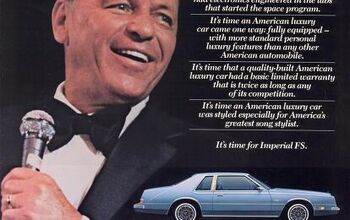
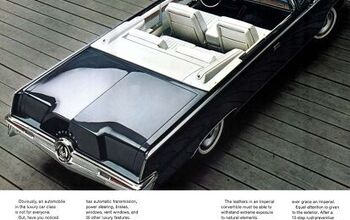
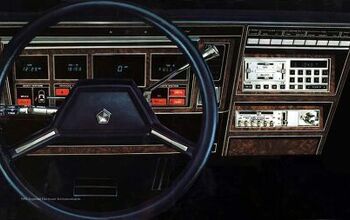
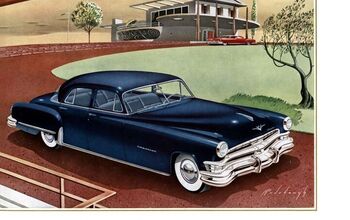
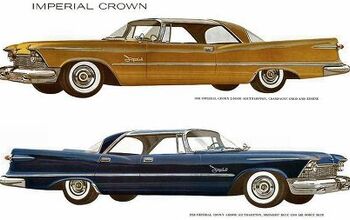










Comments
Join the conversation
A well written article on a criminally ignored line of cars. All too often, historians get too taken up with V-12's and V-16's, forgetting that during the Twenties and Thirties six and eight cylinders powered some incredibly beautiful cars.
Jackson and Perkins many years ago even named a variety of roses Chrysler Imperial. Imperial was once a name that denoted true luxury. Very good article.